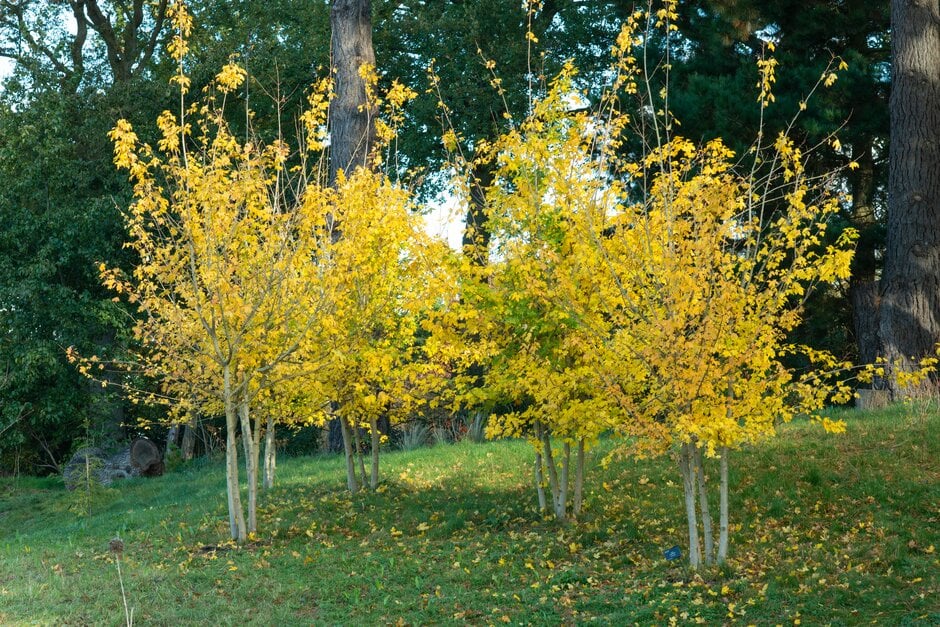Acer campestre
field maple
A medium-sized deciduous tree with a compact bushy crown. Leaves with 5 blunt lobes, turning yellow or red in the autumn. Flowers small, green, forming typical winged maple fruits
Other common names
common eldercommon maple
see moredog oak
hedge maple
maser tree
master tree
masarnwydd lleiaf
Synonyms
Acer campestre var. austriacumSize
Ultimate height
Higher than 12 metresTime to ultimate height
10–20 yearsUltimate spread
4–8 metresGrowing conditions
Moisture
Moist but well–drainedpH
NeutralColour & scent
| Stem | Flower | Foliage | Fruit | |
| Spring | Green | Green | ||
|---|---|---|---|---|
| Summer | Green | Green | ||
| Autumn | Red Yellow | Brown | ||
| Winter |
Position
- Full sun
- Partial shade
Aspect
South–facing or North–facing or West–facing or East–facing
Exposure
Exposed Hardiness
H6Botanical details
- Family
- Sapindaceae
- Native to GB / Ireland
- Yes
- Foliage
- Deciduous
- Habit
- Bushy
- Genus
Acer can be deciduous trees or large shrubs with paired, often palmately-lobed leaves and small flowers followed by characteristic winged fruits. Many have fine autumn colour, and some have ornamental stems
- Name status
Correct
- Plant range
- Europe, W Asia
How to grow
Cultivation
Grow in fertile, moist but well-drained soil in sun or light shade. Suitable for chalky soils. See tree cultivation for further advice
Propagation
Propagate by seed in mid to late autumn or spring. Take softwood cuttings in early summer
Suggested planting locations and garden types
- Coastal
- Cottage and informal garden
- Wildlife gardens
- Low Maintenance
- Hedging and screens
Pruning
Pruning group 1 but prune only from late autumn to midwinter
Pests
May be susceptible to gall mites, aphids, caterpillars and horse chestnut scale
Diseases
May be susceptible to tar spot, verticillium wilt and honey fungus
Get involved
The Royal Horticultural Society is the UK’s leading gardening charity. We aim to enrich everyone’s life through plants, and make the UK a greener and more beautiful place.
